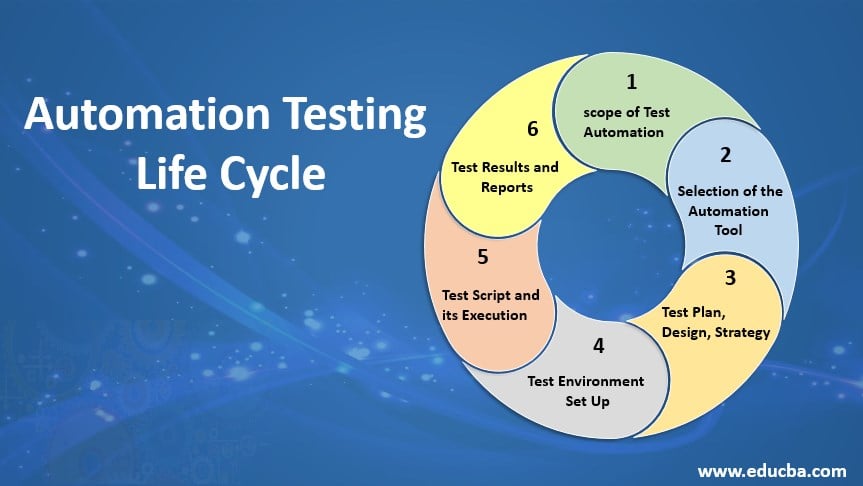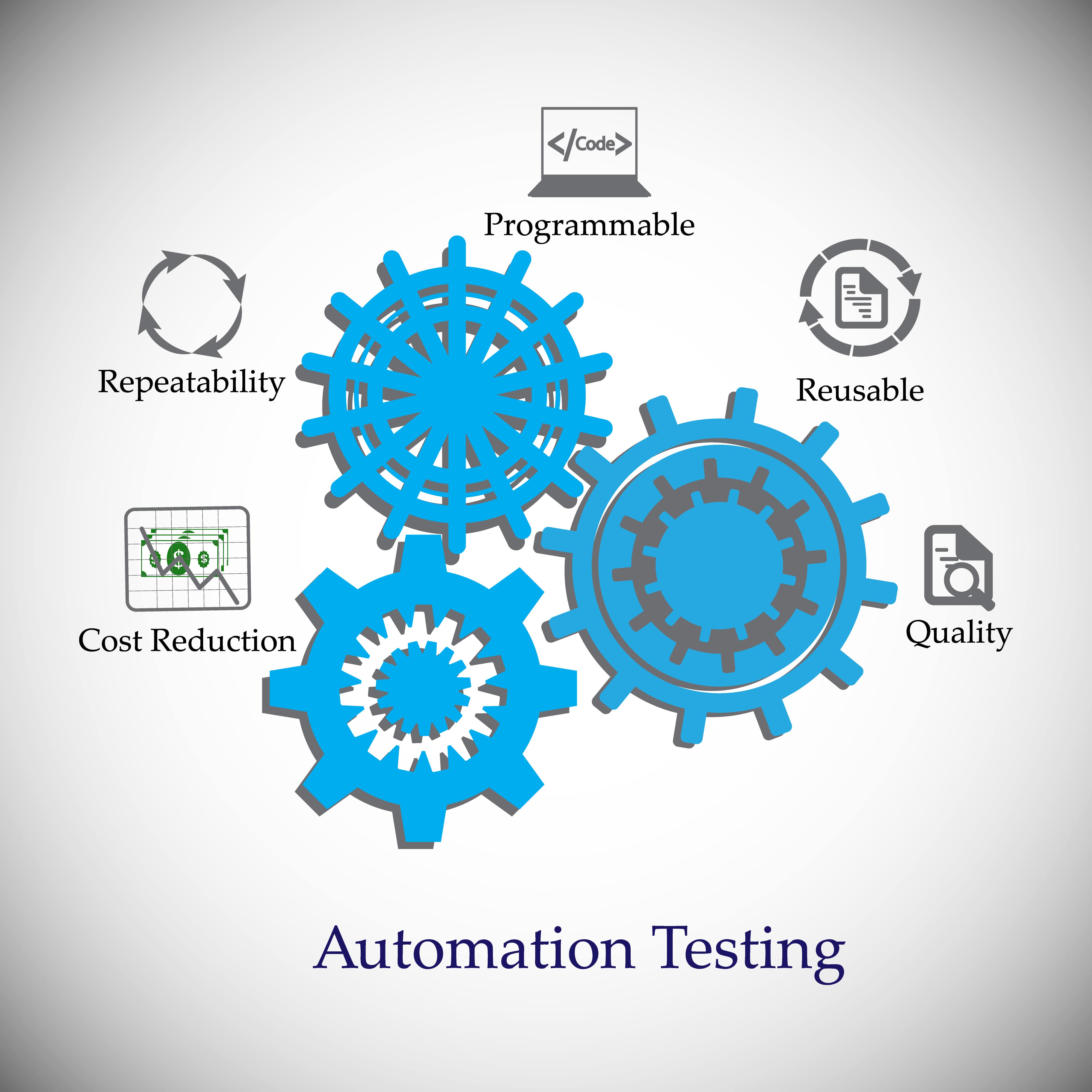Automation Testing Methods: Best Practices for Seamless Assimilation
Automation Testing Methods: Best Practices for Seamless Assimilation
Blog Article
From Handbook to Automated Testing: A Comprehensive Guide to Transitioning Smoothly and Effectively
In the realm of software testing, the shift from guidebook to automated procedures has actually come to be a significantly essential change for companies looking for to boost performance and precision in their screening techniques. As modern technology proceeds to development, the requirement for effective and smooth computerized screening techniques has never been a lot more pressing. The journey from guidebook to automated screening is not without its difficulties, but when approached purposefully and with a clear strategy in mind, the advantages can be substantial - automation testing. In this detailed guide, we will discover crucial steps and considerations necessary for a successful transition, from the initial option of tools to the combination of automation into existing workflows. Keep tuned to discover the insights that will certainly aid lead the way for a smoother and extra reliable testing procedure.
Advantages of Automated Checking
Automated screening offers various benefits, improving efficiency and precision in software advancement processes. Automated tests can be run all at once on multiple gadgets and operating systems, substantially speeding up the screening phase compared to hands-on testing.
Additionally, automated testing ensures a greater level of accuracy in identifying flaws. Consistency in screening is likewise improved, as automated examinations carry out the same actions exactly each time they are run.
Selecting the Right Devices

First of all, examine your objectives and demands. Comprehend the extent of your job, the innovations included, and the ability of your team. This analysis will help you determine the capabilities and functions you call for in your testing tools.
Second of all, consider the compatibility of the tools with your existing systems and processes. Smooth assimilation with your present software application development lifecycle is vital to make certain a smooth change to automation.
Furthermore, evaluate the scalability and adaptability of the tools. As your testing requires progress, the tools need to have the ability to adapt and suit modifications effectively.
Last but not least, aspect in the support and community around the devices. When carrying out automated screening, robust assistance and an active customer neighborhood can provide useful resources and help. By thoroughly taking into consideration these aspects, you can pick the right tools that line up with your requirements and established the phase for a successful change to automated screening.
Creating Effective Examination Manuscripts

When crafting test manuscripts, it is vital to think about the specific needs of the software being examined and guarantee that the manuscripts attend to all critical capabilities. Clear and descriptive naming conventions for test manuscripts and test situations can boost readability and maintainability. Furthermore, including error handling devices within the examination scripts can aid in identifying and attending to issues immediately.
Furthermore, organizing examination manuscripts into modular parts can improve reusability and scalability, minimizing redundancy and boosting efficiency in examination manuscript upkeep. Routine testimonials and updates to test scripts are critical to equal progressing software program requirements and capabilities. By following these concepts, testers can develop reliable and robust test manuscripts that add significantly to the success of automated testing procedures.
Integrating Automation Into Workflows
Reliable integration right here of automation tools into existing process improves and enhances procedures efficiency within software advancement cycles. When including automation into process, it is crucial to identify repeated tasks that can be automated to save time and decrease human error. By effortlessly incorporating automated testing tools like Selenium or Appium right into the software program growth lifecycle, groups can accomplish faster comments on code modifications, causing quicker pest detection and resolution. This combination enables continual screening throughout the advancement procedure, guaranteeing that any issues are identified at an early stage, resulting in higher software quality. In addition, automation can be made use of to trigger examinations instantly after each code dedicate, providing prompt recognition and liberating testers to concentrate on more complicated scenarios. Correct combination of automation tools calls for partnership in between development, testing, and operations groups to establish a unified process that optimizes efficiency and efficiency in providing premium software program items.
Making Sure a Smooth Transition
Effectively transitioning to automated testing includes precise planning and mindful execution to make the most of and minimize disturbances performance in the software program advancement process - automation testing. To make sure a smooth transition, it is important to begin by conducting a detailed assessment of the existing testing processes and identifying areas where automation can bring one of the most considerable benefits. Engaging with all stakeholders early in the procedure, consisting of programmers, testers, and task supervisors, is essential for gathering address support and buy-in for the automation effort
Communication is vital throughout this shift phase. Clear communication of the objectives, advantages, and expectations of automated screening helps to take care of any type of resistance or concerns that Our site might arise. Furthermore, giving sufficient training and resources for staff member to upskill in automation devices and techniques is important for ensuring a successful change.

Verdict
To conclude, transitioning from manual to automated testing provides various advantages, consisting of boosted performance and integrity. By choosing the suitable devices, composing efficient test manuscripts, and incorporating automation effortlessly into workflows, organizations can make sure a smooth and successful transition. It is necessary to accept automation as a valuable possession in software program screening processes to enhance overall top quality and productivity.
In the realm of software program screening, the change from handbook to automated processes has come to be a significantly crucial shift for organizations looking for to improve efficiency and precision in their screening practices. Automated tests can be run at the same time on numerous tools and operating systems, dramatically speeding up the testing phase contrasted to hand-operated screening. Uniformity in screening is also enhanced, as automated examinations carry out the same steps precisely each time they are run.To make sure the successful application of picked screening devices, the production of effective examination manuscripts plays a vital role in confirming the capability and efficiency of automated processes - automation testing. By complying with these principles, testers can develop robust and effective examination scripts that contribute dramatically to the success of automated testing processes
Report this page